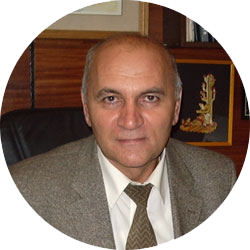Ion-selective electrolysis with diaphragm – a new process in the technology of electrochemical production, which is fundamentally different from routinely-used electrolysis processes with separated anodic and cathodic spaces, such as electrolysis with submerged or filtering diaphragms, or electrolysis with an ion-exchange membrane.
The main distinctive feature of the given process is that ion transfer selectivity in the course of electrolyte aqueous solution electrolysis is achieved thanks to micro-filtration ceramic diaphragm made of zirconium, aluminum and yttrium oxides, which is placed between the electrodes of an electrochemical system, due to creation in the volume of diaphragm porous space of current density and pressure gradients controlling the rate and movement direction of water and charged particles (ions) it contains in the diaphragm pores.
Technology of ion-selective electrolysis with diaphragm secures electrochemical decomposition of concentrated electrolyte solution followed by obtaining of the end products with no intermediate conditioning of anolyte and catholyte, continuously, in electrochemical reactor with inert micro-porous diaphragm. Technology of ion-selective electrolysis (ISED) has been developed as an alternative to well-known technological processes of chlorine synthesis: mercury cathode electrolysis, diaphragm electrolysis and ion-selective membrane electrolysis.
ISED technology was first designed for highly-effective and ecologically safe synthesis of mixed gaseous products – chlorine (95%), chlorine dioxide(3%), ozone (2%) as well as sodium hydroxide solution (150-170 g/l) from sodium chloride solution (200-250 g/l) and is implemented in AQUACHLOR range devices, whose main product is acid (with рН 2.5-3.5) solution of the above oxidants in water of 0.5-2.0 g/l concentration (analog of chlorine water produced in water treatment plant chlorinators, when gaseous chlorine is introduced into water) and sodium hydroxide solution of 150-170 g/l concentration.
